Spider-Man: The Trans Advocacy

A quick note that this article discusses potential hardships within the LGBTQ+ community, and contains a summary of a scene that may be triggering to anyone who has had to come out in a similar or potentially unsafe situation, particularly for those who identify as trans. Please remember that The Artifice is built on being a community of readers and writers who are willing to learn and are passionate about various topics, so it is requested that commenters keep comments relevant to this article and do so from a place of respect for the subject matter, especially as this work touches on current events going on in the world as it pertains to trans rights and trans advocacy. Finally, there are multiple plotline spoilers for Spider-Man: Across the Spider-verse in the respective sections below.
What is Advocacy?
Advocacy is defined as, “the act or process of supporting a cause or proposal: the act or process of advocating” and can be used in the following sense, “known for his advocacy of gay rights”. 1 Anyone can be an advocate, and, usually, advocacy tends to be done collaboratively, with groups formed in the many different areas. The primary purpose, especially for group advocacy, is to give a voice to people who may feel unheard in their situation. 2
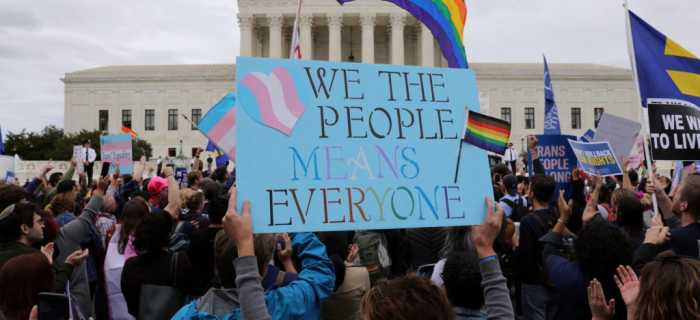
In the case of Across the Spider-verse, one could see the film itself as an advocacy statement, through the characters Miles and Gwen and their story. This piece will focus more on the characterization of Gwen and how the film presents itself as standing in solidarity with trans people. Gwen is portrayed as trans-coded throughout the film, and this will be further explored, along with her difference in appearance in the comic run, after defining what it means to be transgender.
The Transgender Experience
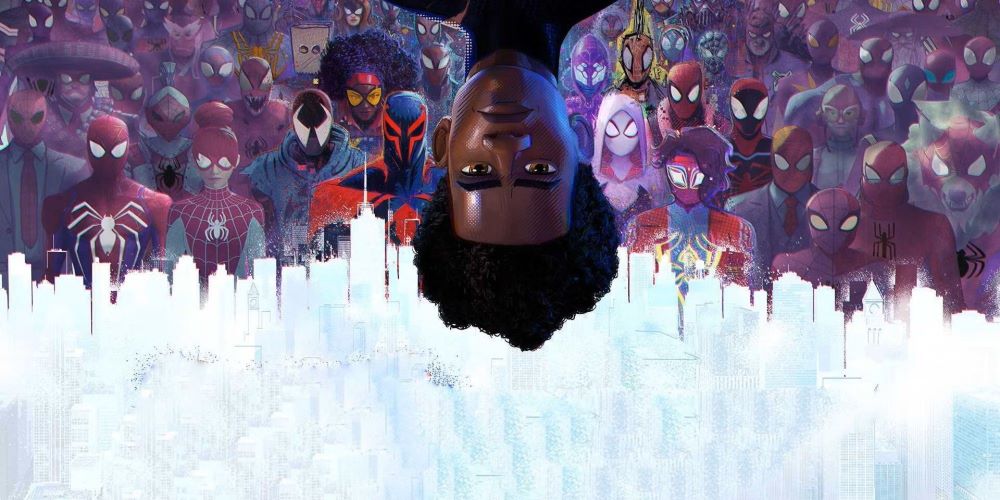
The transgender experience is most easily defined as one where the person questioning their gender does not identify with their assigned gender at birth. 3 Transgender people can be female-to-male, male-to-female or nonbinary. As for when a person figures out they might be transgender, some people know from a young age, and others start questioning their gender later in life. 4 Trans people often, but not always, experience body dysphoria, which contributes to depression, anxiety, and attempted suicide. Dysphoria typically occurs when a person experiences a disconnect between their internally perceived appearance and their appearance to others. Trans people usually choose to combat this dysphoria by transitioning, and it has been found that the earlier transition can happen, the issues of depression, anxiety, or suicide attempt lessen. 5 Some people choose to transition into a gender presentation that matches the version of themselves that they see in their head, and this transition can be social, hormonal, and it can include gender-affirming surgeries. Others opt to not medically transition, choosing instead to socially transition. Furthermore, there are trans people who choose not to transition at all. 6
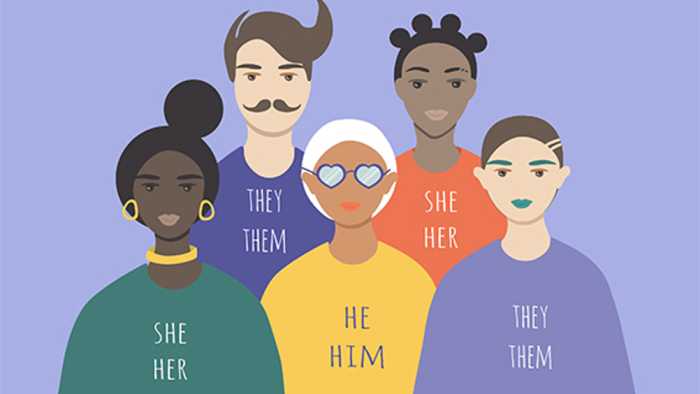
There are negative factors to the trans experience as well, such as when someone knowingly and purposefully uses the wrong name or pronouns to refer to a trans person. Some also feel that their employment is unsafe to be out in, as it can be a place for uncomfortable questions or feeling that they’re in the workplace as a token LGBTQ+ member. Some trans people experience trouble accessing safe housing and medical care as well, and, in the case of the US, legislation is often levied against trans people, in order to deny their access to safety. 7 In addition to these problems, increasingly incorrect and problematic research suggests that “conversion therapy” can “return” a transgender person to being cisgender. On top of that, recent studies asked people if they thought children were being “turned” trans because of the internet, and it was therefore possible that a trans person, especially a child is “confused” about their gender identity and expression. 8
It is important to remember that whatever the trans person chooses to do with their identity is valid, even if it might not fit expectations or make sense. Being trans is becoming easier to navigate, but it still is not without risk. These aspects of the trans experience are something to keep in mind in terms of Gwen’s story in Across the Spider-verse. Since the transgender experience has been explained, the psychological research behind being trans will be examined next.
The History and Psychology of Being Trans
In this section, some of the history of being trans is explored. This section also includes the current psychological research of being trans, which examines the differences between transgender individuals and cisgender individuals. Cisgender, or cis, is sometimes confused as being a slur, but cisgender simply refers to those whose gender identity matches their assigned sex at birth. 9 This research helps lay the ground work for understanding what kind of advocacy the trans community needs. In a separate section, the subject of transgender children is examined. This subsection includes some of the current events in the United States that trans minors are facing. The political aspect is not the point of this piece, but it is important in order to better understand why the advocacy in Across the Spider-verse matters.
Trans people and gender minority people, according to history, have always existed, from the Gala in 5000 BCE in Sumeria to the two spirit community of Turtle Island. 10 In addition to this The National Geographic has provided some information on how trans history is being documented, complete with a detailed timeline to further cement the idea that being transgender has always existed. 11
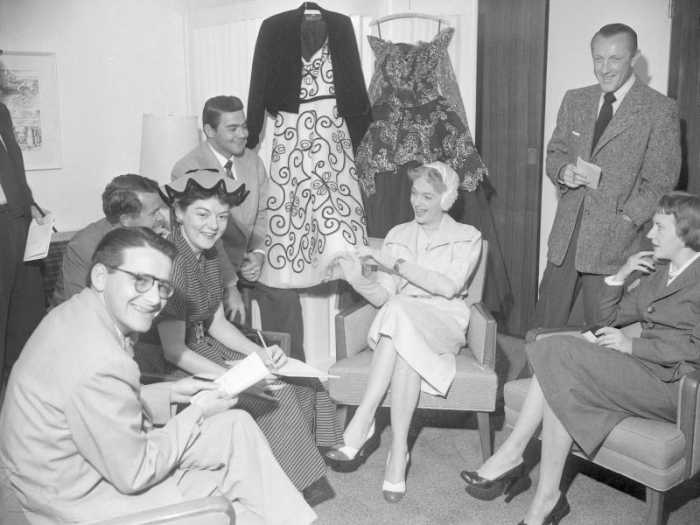
Furthermore, the first trans clinic opened in Berlin in 1919, due to the efforts of Magnus Hirschfeld. The clinic was called the Institute for Sexual Research and sought to bring understanding and affirming treatment for a wide range of LGBTQ+ (as we would call them now) members. However the Nazis erased a lot of this research, which caused a set back in understanding in psychological terms of being trans, as some of the practices done at the Institute for Sexual Research may have been considered more progressive than current practices. 12

Analyzing the trans history that exists is contended in academic circles, even though it is now considered a viable area of study. Trans individuals experience difficulty feeling “seen” in history, and, despite recent media attention, historians find it difficult to talk about where trans people fit into the bigger picture of history, particularly in regards to trans people of color. It is certainly important to understand what the history of being transgender is, as it provides a basis for things like understanding the current struggles of being trans in the current society of the world. Understanding trans history aids in understanding how to be a better trans advocate. 14
Despite the growing evidence of a historical existence, transgender people were considered mentally ill in the 1980s until the 2010s. The stigmatized or more pathological diagnosis of “transsexual” or “gender identity disorder in adults and adolescence” found in the 1994 edition of the DSM IV was removed and re-defined as “gender dysphoria” in the DMS V in 2013. 15 The WHO followed suit in regards to how being trans is diagnosed and treated in 2019, with the following sentiment being voiced:
‘When you have a system that sets up someone’s very existence and identity in a diagnosis as a mental health condition, that feeds an enormous amount of stigma and drives people away,’ Kyle Knight, researcher in the LGBT rights program at Human Rights Watch, tells TIME. ‘We have interviewed transgender people in Japan, Kazakhstan, Ukraine and Indonesia to name a few countries, and they don’t even want to begin to undergo the process of legal recognition because it requires them to go see a psychiatrist who will tell them they have a so-called mental disorder; something that they don’t feel corresponds with their own reality. People don’t feel like their gender identity is something diagnosable or needs a diagnosis.’
Kyle Knight 16
Despite the erasure of the mental illness part of the diagnosis, some people still use the argument of mental illness and “confusion” to create an othering, phobia of trans people. 17 To that end, trans people also often times incorrectly paired with groomers and pedophiles in order to further alienate trans people from society. 18 Some even lose housing, jobs, and openly face harassment. These statistics worsen when the trans individual is also a person of color, meaning that being trans can be incredibly dangerous. 19 Next, the differences between transgender and cisgender individuals on a neurological level will be examined.
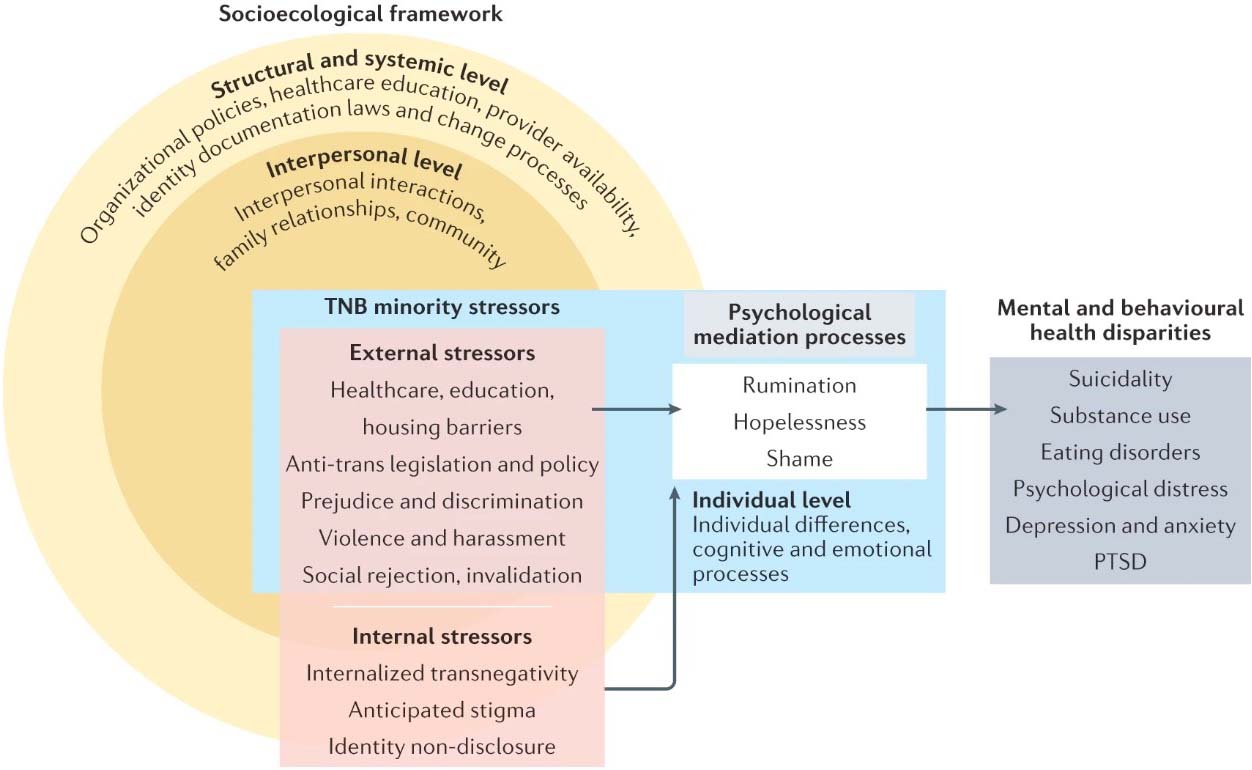
An Examination of the Different Make Ups of Transgender and Cisgender Brains
Quite a few studies examine what makes a trans person different from a cisgender person. For example, a meta-analysis attempted to see if there had been any conclusive evidence gathered in terms of a biological difference in trans individuals. This meta-analysis concluded that a lot of the results found in the articles they examined needed to be less contradictory and that ethological studies need to be more inclusive in their design and more easily understood by the media and politicians. However, a few of the studies indicated a potential biological difference in transgender people. 21
Another meta-analysis posits a lack of examination of transgender brains in a neuroscience context and recommends more study of transgender brains to see how the different variables of being trans, such as social transition, hormone therapy, and being raised as a gender that does not match the gender identity of the individual lends more understanding to the dimorphic regions of the brain. The meta-analysis also attempts to define “whether transgender individuals could have greater variation in these brain regions from their cisgender counterparts” and finds that there are some differences, such as the size of the hippocampus, with trans men having a hippocampus that is closer to that of cis men, according to the studies examined. 22
One study sought to see how a whole brain analysis would shed light on how the transgender brain works in comparison to cis gender brains. This study hypothesized that the trans participants would score higher on the Body Image scale, as they were not participating in Gender Affirming Hormone Treatments. In addition to this body scale, participants took part in an MRI. An intrinsic ignition framework assisted in analyzing the whole brain scan over time.
The study found four different groupings of brain activity for their test groups of cis man, cis woman, trans man, and trans women, with the body image scale reporting higher dissatisfaction in the trans groups of participants. The study concluded that there should be four characterized whole brain groups to account for trans people, that the brain should be studied as a complex whole system, and that more cutting-edge frameworks are needed in order to better understand how gender affects the brain. 23
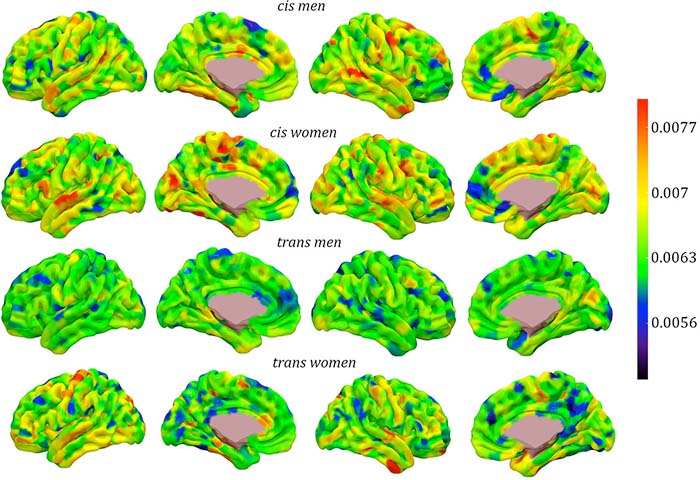
In addition to the lack of conclusive studies on how transgender brains function, a meta-analysis of the binary of mitochondria failed to be conclusive. The meta-analysis suggests that considering the mitochondria as a binary is incorrect, especially when one considers the complexities of the human sexual and gender experience. The meta-analysis found one study that examined mitochondrial production in transmasculine individuals. This specific study found that the individuals’ “had higher ROS production after three months of taking testosterone,” which led the meta-analysis to concur that mitochondrial cells may supersede assigned sex at birth. In addition to this, the meta-analysis posited that some of the data collected in a binary format may be misrepresented. 25 The meta-analysis concluded that further research that is inclusive in more of a spectrum for sex and gender needs to be carried out. Now with the meta-analyses covered, the struggles and psychology of trans children will be detailed next.
Transgender Children
It is important to touch on the subject of transgender children, as it makes some of the events of Across the Spider-verse that will be detailed in later sections. The trans experience obviously does not occur in only adults, but it is sometimes more difficult to tell how children experience gender. For example, it is normal for children, who are not knowledgeable with gender norms or gender expectations, to play with toys or wear clothes outside of their gender assigned at birth. This does not mean that a child is necessarily trans, however, “if your child who was assigned male at birth repeatedly insists over the course of several months–or years, that she is a girl, then she is probably transgender.” Non-binary children might not have the language to be insistent about their gender until enough time and knowledge about their gender experience is gained. 26 In addition to this, parents of potentially trans children may want to consider seeking clinical counselling with a transgender-friendly therapist if the following two conditions happen:
“1. The child appears to be negatively affected by stigma attached to gender nonconformity.
2. The child is showing signs of experiencing gender dysphoria, which refers to distress they may experience as a result of a conflict between sex assigned at birth and gender identity/role.”
Dr. Walter Bockting 27
One study in particular examined if gender dysphoria could be treated with the following Dutch treatment procedure, referenced in the block quote below, and mapped out when children encounter their gender throughout their lives. For example, children can have a sense as early as three or four that they are a specific gender that may not align with their assigned gender at birth. By seven to nine, a child has an even more concrete idea of biological sex, self-gender identity and social gender and may start to experience the onset of puberty at nine. From there, most people go through adolescence, which is mostly a social construct, in that it typically ends when society considers the individual an adult–usually around eighteen or nineteen.
Box 1
Management of gender dysphoria22
From Annelou L C de Vries and Peggy T Cohen-Kettenis’s Clinical management of gender dysphoria in children and adolescents: the Dutch approach
- Make a full assessment as early as possible
- Follow with supportive counselling throughout childhood and adolescence
- Subsequent interventions should only take place with informed consent, first by parents and then by the young person, with reflection before each phase
- If intense gender dysphoria persists, consider using puberty blockers at Tanner stages 2–3
- Consider use of cross-sex hormones at age 16
- At age 18–19 and subsequently, consider gender reassignment surgery
While the treatment involved early intervention for the trans children, there has been more distressed notions on top of an influx of children going to the gender clinics for treatment. In this regard, more research is needed to see what might be causing the distress, as well as discovering at what age informed consent to start treatment could be conducted, though it is worth noting that treating pre-teen trans children with puberty blockers were mostly positive, and that only one candidate did not elect to start hormone therapy. 28 The banning of gender affirming raises concerns that following AMA or APA tested guidelines for treating a trans child may result in being charged with a felony. There are also concerns that mental health care in general could equally come under fire. 29
It is important to recognize that this particular conservative stance, especially when combined with the other anti-trans arguments that trans children hear, is more detrimental than helpful. Trans children all over the world experience higher rates of bullying, depression, and suicide ideation than their cis gender cohorts, according to a combined meta-analysis and study that examined the topic. The study, conducted in Finland, found that their transfeminine youth experienced the most bullying of the participant population, and their transmasculine participants experienced more bullying than their cis gender participants. Transmasculine participants displayed the worst mental health, followed by the transfeminine participants. The cisgender participants had the best self-reported mental health. 30 In addition to the study on bullying, another study found that trans and gender diverse youth face more disadvantages than their cis counterparts. 31 The othering from society and denial of access to affirming care for many trans people is what makes trans advocacy crucial.
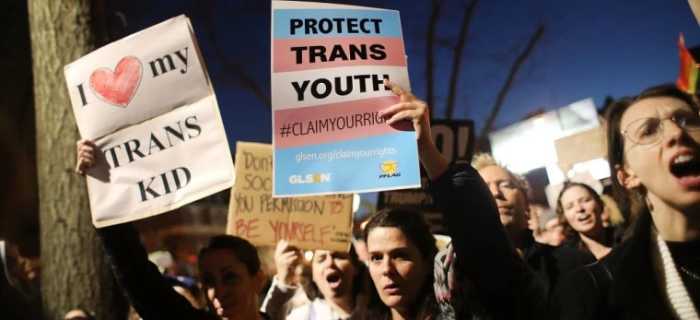
Advocacy in Transgender Spaces
As the previous sections demonstrated, the transgender community is rather marginalized and discriminated against. This means that advocacy for this community is important. Fortunately, there are a few more resources out there for such causes. The National Center for Transgender Equality, for example, tries to make sure laws are passed in the US to protect trans people 33 Outside of these resources, it is encouraged that searches are done for other advocacy groups for trans rights outside of what has been presented here.
Of course, there are other things that can be considered advocacy pieces, like the other subject of this article, Across the Spider-Verse or other stories that provide representation, for example. To that end, we will dive into the traits of a good advocate versus a bad advocate in a later section. These groups provide visibility and the ability to give a voice to often minority, othered groups in society as has been outlined above. For now, it is important to cover the subject of trans coding, so that some of the elements presented in Across the Spider-Verse can be better understood.
Trans Coding – What is it?
Trans coding happens when a character in a work does subtle things to indicate they could be trans. Trans coding is also a lens for analyzing characters through. Coding in general exists to signal certain aspects to those who might be in the know for good or for bad. In regards to trans coding, there are some other examples, other than Gwen in Across the Spider-verse. Mulan from Disney’s animated Mulan (1998) comes to mind. Mulan herself obviously was not trans in her narrative, but her donning male clothing and learning how to socialize like a man could be seen as trans coding, especially when considering her song “My Reflection” that debuted shortly before her decision.
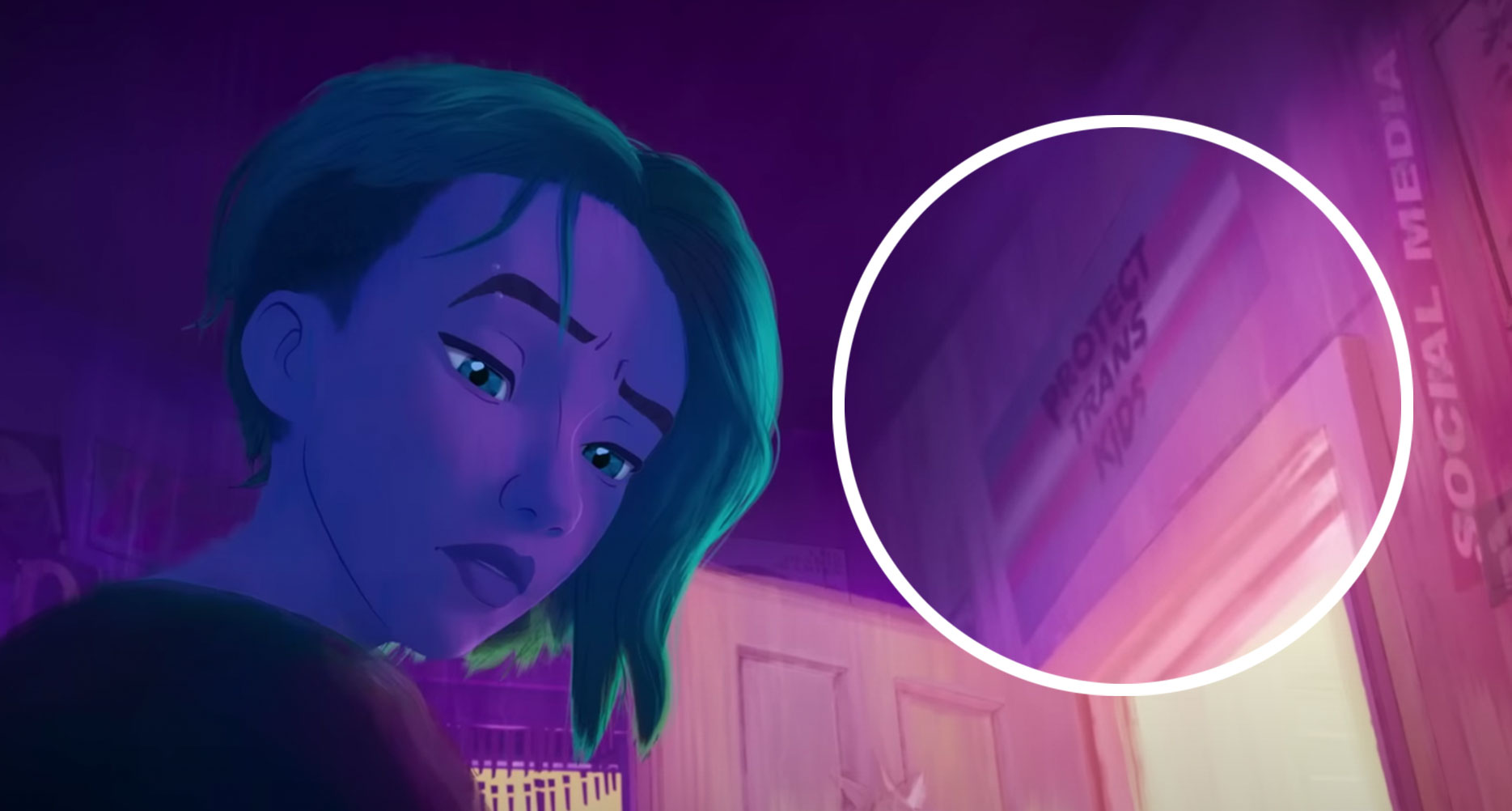
While Gwen may not be concretely trans in her narrative, it is clear from the image below that she is a trans ally at the very least. However, in addition to her stance on trans children, the way her story is presented is also trans-coded, at least in terms of this animated film. The next section will examine how she has been trans coded in Across the Spider-Verse, particularly in regards to her character design and how her development mimics that of a trans narrative. This examination will be contrasted by her design in the comics.
Gwen and Her Trans Coding in Across the Spider-verse

Gwen’s color pallet, as seen above, throughout the animated movie is bright pink, baby blue in varying hues, and white. These specific colors are extremely close to those used in the trans flag. In addition to this, Gwen’s a little taller than her other girl friends, her shoulders are broader than her friends’ shoulders, and her movements are kind of unsure of herself in her own skin. She seems to constantly adjust her clothing in ways that suggest that, while she likes wearing the clothing, she is not entirely familiar with it. Her shoulders and nose are also a bit broader than they typically are in cis girls. In addition to this, Gwen appears to be genuinely surprised when she starts to fit in with her peers at school, which is also something that trans people struggle with at times. In contrast, Gwen’s appearance is predominantly colored by white, teal, and a darker pink or magenta.
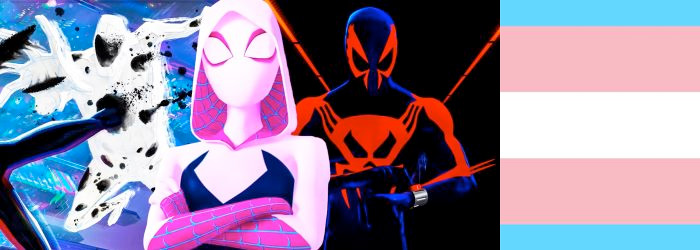
All of this character design is bolstered by Gwen’s narrative in Across the Spider-verse. A lot of Gwen’s driving conflict revolves around being accepted by her father, and she ends up running away from him in an incident where she takes on the wrong version of The Raven for her timeline. This conflict can be correctly interpreted that Gwen cannot allow herself to be outed as a Spider Man, especially since her dad is hunting her down for a criminal activity, complete with being willing to shoot her if needed, but, given how it is presented in the film, there can be a secondary interpretation of the fear a trans child typically feels when coming out to a parent.

In a particularly moving moment, Gwen comes out to her father, and the scene is particularly trans coded in its delivery. As Gwen is nervously talking, the background shifts to the colors of the trans flag in an oversaturation of water colors. In the background, the audience can see her dad’s uniform with a pin that shows his support for trans kids. After Gwen’s dad answers her at the end of the speech, the colors of Gwen’s world return to normal. Having thoroughly examined how Gwen’s character was trans coded in Across the Spider-verse, we can more fully dive into Gwen’s dad’s role in this story, from potential antagonist to potential advocate.
Gwen’s Father and his role in Gwen’s Story
Gwen’s father in the story of Across the Spider-verse fulfills a multi-faceted role. He is Gwen’s parent–someone she longs to be close to–a police captain, and, more complexly, something of an antagonistic presence. It is important to note that an antagonist is not necessarily the same as a villain in the story. An antagonist is simply someone who opposes another person (source: https://www.merriam-webster.com/dictionary/antagonist). Gwen’s father is an antagonist to Gwen in the sense of her identity as a Spider-Man, as he is the police captain in search of a criminal who happens to be Gwen. He is also, given the transgender subtext surrounding Gwen’s character arc, an antagonist to Gwen’s identity as a person.
Gwen’s father goes from threat to advocate, however. Once Gwen comes out to him as the criminal he’s been hunting the entire film, they have a bit of a heated moment, until Gwen gets everything she needs to say out. While Gwen’s father is still hurt and a bit confused, he comes to terms with his feelings and decides to trust his daughter and be a bit more emotionally available to her. His advocacy is one of support, protection, and being a safe place for his daughter, to the point that he resigns his post as a police captain. This advocacy is somewhat short lived, because of other events in the movie, however.

Gwen’s father is not her only support during the events of Across the Spider-verse. Miles Morales also fulfills the role of an advocate for Gwen, though he is a bit of a conflicted advocate, due to his relationship with Gwen throughout the film. Miles’s advocacy will be detailed below.
Miles as an Advocate
Miles Morales is one of the main protagonists in Across the Spider-verse. He is a character that drives a lot of the overall plot forward, even to the point of defying certain known outcomes in a typical Spider-Man story, such as the police captain dying before that universe’s Spider-Man can save them, thereby becoming the moment where that Spider-Man decides to be a hero. In terms of Gwen’s interwoven story, Miles has a love-interest in Gwen, which is further complicated in that, due to multiverse reasons, Gwen knows that no iteration of their relationship works out. Miles serves as a counterpoint for Gwen and pushes her to take fate into her own hands.
Because of this friction between them, Miles is not always a consistent advocate for what Gwen needs from him. There are many instances where Gwen claims Miles cannot understand what she is going through. These instances of conflict between Gwen and Miles often cause Gwen to try to block him from getting close to her, and, in response, Miles often pushes too far to change her mind or the outcome that is in front of him.
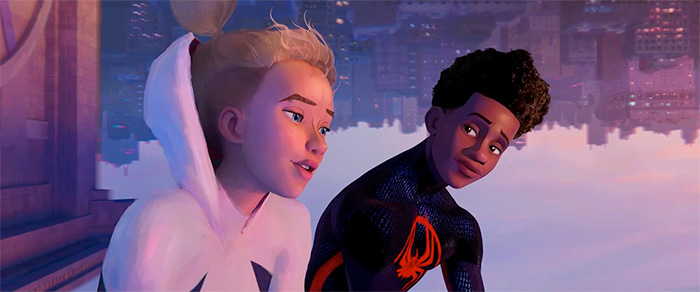
In this manner, Miles is both a good advocate, but also a bad advocate. He sometimes gives Gwen the ear she needs and allows her the space she needs to feel safe, but he also sometimes does not listen or understand those needs. Using Miles’s advocacy as example, the traits of a good advocate versus a bad advocate will be delved into next.
The Traits of a Good Trans Advocate vs. Bad Advocacy
Firstly, going off of what is portrayed in Across the Spider-verse, Gwen’s dad exemplifies the attributes of a good advocate, once he moves past his emotions about Gwen’s identity. He really takes the time to listen to what his daughter has to say when she comes out to him. He takes action to rectify the unknown hurt he has caused throughout the entire film, and, he immediately changes what has been hindering their relationship. He even allows Gwen the freedom to try and make things right with Miles by letting her go to his universe.
Miles, on the other hand, does display some aspects of a bad advocate. While he understands Gwen’s struggle, it also causes some frustration for him. In this frustration, Miles pushes to force a change when the odds, and perhaps Gwen’s wishes are the opposite of that force for change. This forcing for things to come out and change eventually leads Miles to get into a situation where he comes out as Spider-Man, only for it to be rejected–like he’s always feared–and it is revealed that this version of his mom is from Universe 42, which is where Miles finds himself, separated from Gwen and his support system, at the end of the movie.
Essentially, within the film, the audience can see that a good advocate supports the minority group, allows them to use their voice without being silenced, and seeks to make it so that the affected group can cause change in society. A poor version of an advocate hears what is needed, but has not truly listened to what the minority group needs from them for change. A bad advocate could also force change without understanding the danger to the minority group that forced change–even if it is technically the correct outcome–might cause. These aspects are also true for advocacy organizations throughout the world. 34
How the Animators Displayed Their Advocacy
The animators, by framing Gwen in a subtle trans narrative through her trans coding, gave viewers who might be in Gwen’s situation feel seen. The animators smartly displayed their stance on trans rights and protecting trans kids in ways that appealed to empathy without being too overt. In this manner, it is equally valid to say that Gwen could simply be worried about revealing herself as her universe’s Spider-Man, but, if someone understands the codes they put into the film, then, it becomes a piece of supporting, well done advocacy.
Across the Spider-verse came out in the United States at a time where many conservative-leaning states were making a lot of the trans community, especially trans children, feel threatened by exclusionary laws. 35 The fact that the animators chose the stories they did from the comics to change and tell in a trans-forward light gave a lot of LGBTQ+ members a sense of belonging. 36 Now that trans advocacy has been thoroughly examined, it is time for the conclusion.
In conclusion, Across the Spider-verse proves to be a heartfelt, approachable piece of trans advocacy. In conjunction with other advocate groups, the film provides a space for trans voices to be heard in spite of the hate and struggles they face. The animated film can also serve as a place from which people who maintain their gender assigned at birth can understand some of the trans experience, which is also important for developing empathy and understanding for what issues the trans community face in the present day.
Works Cited
- Merriam-Webster. (2019). Definition of advocacy. Merriam-Webster.com. https://www.merriam-webster.com/dictionary/advocacy ↩
- Mind. (2018). Types of advocacy. Www.mind.org.uk. https://www.mind.org.uk/information-support/guides-to-support-and-services/advocacy/types-of-advocacy/ ↩
- National Center for Transgender Equality. (2016, July 9). Understanding Transgender People: The Basics. National Center for Transgender Equality; National Center for Transgender Equality. https://transequality.org/issues/resources/understanding-transgender-people-the-basics ↩
- American Psychological Association. (2023, June 6). Understanding transgender people, gender identity and gender expression. American Psychological Association. https://www.apa.org/topics/lgbtq/transgender-people-gender-identity-gender-expression ↩
- Zaliznyak, M., Yuan, N., Bresee, C., Freedman, A., & Garcia, M. M. (2021). How Early in Life do Transgender Adults Begin to Experience Gender Dysphoria? Why This Matters for Patients, Providers, and for Our Healthcare System. Sexual Medicine, 9(6), 100448. https://doi.org/10.1016/j.esxm.2021.100448 ↩
- What Do I Need to Know About the Transitioning Process? (n.d.). Www.plannedparenthood.org. https://www.plannedparenthood.org/learn/gender-identity/transgender/what-do-i-need-know-about-transitioning ↩
- Brown, A., et al. (2022, June 7). The Experiences, Challenges and Hopes of Transgender and Nonbinary U.S. Adults. Pew Research Center’s Social & Demographic Trends Project. https://www.pewresearch.org/social-trends/2022/06/07/the-experiences-challenges-and-hopes-of-transgender-and-nonbinary-u-s-adults/ ↩
- Turban, J. (2020, October 23). The Disturbing History of Research into Transgender Identity. Scientific American. https://www.scientificamerican.com/article/the-disturbing-history-of-research-into-transgender-identity/ ↩
- Office of Social Equity – Valdosta State University. (2022). Valdosta.edu. https://www.valdosta.edu/administration/finance-admin/human-resources/employee-matters/Transgender%20Terminology.php ↩
- Seven Things About Trans People That You Didn’t Know. (n.d.). HRC. https://www.hrc.org/resources/seven-things-about-transgender-people-that-you-didnt-know ↩
- Blakemore, E. (2022, June 24). How historians are documenting the lives of transgender people. History. https://www.nationalgeographic.com/history/article/how-historians-are-documenting-lives-of-transgender-people ↩
- Schillace, B. (2021, May 10). The Forgotten History of the World’s First Trans Clinic. Scientific American. https://www.scientificamerican.com/article/the-forgotten-history-of-the-worlds-first-trans-clinic/ ↩
- Aleksandra Djajic-Horváth. (2018). Magnus Hirschfeld | German physician. In Encyclopædia Britannica. https://www.britannica.com/biography/Magnus-Hirschfeld ↩
- Agarwal, K. (2018, May 1). What Is Trans History? | Perspectives on History | AHA. Www.historians.org. https://www.historians.org/research-and-publications/perspectives-on-history/may-2018/what-is-trans-history-from-activist-and-academic-roots-a-field-takes-shape ↩
- Psychiatry.org – Gender Dysphoria Diagnosis. (n.d.). Www.psychiatry.org. https://www.psychiatry.org/psychiatrists/diversity/education/transgender-and-gender-nonconforming-patients/gender-dysphoria-diagnosis#:~:text=It%20was%20not%20until%201980 ↩
- Haynes, S. (2019, May 28). The World Health Organization Will Stop Classifying Transgender People as Having a “Mental Disorder.” Time; Time. https://time.com/5596845/world-health-organization-transgender-identity/ ↩
- Lopez, G. (2016, May 13). Myth #1: Transgender people are confused or tricking others. Vox. https://www.vox.com/identities/2016/5/13/17938090/transgender-people-tricks-confused ↩
- Lavietes, M. (2022, April 12). “Groomer,” “pro-pedophile”: Old tropes find new life in anti-LGBTQ movement. NBC News. https://www.nbcnews.com/nbc-out/out-politics-and-policy/groomer-pedophile-old-tropes-find-new-life-anti-lgbtq-movement-rcna23931 ↩
- National Center for Transgender Equality. (2019). Non-Discrimination Laws. National Center for Transgender Equality. https://transequality.org/issues/non-discrimination-laws ↩
- Tebbe, E. A., & Budge, S. L. (2022). Factors that drive mental health disparities and promote well-being in transgender and nonbinary people. Nature Reviews Psychology, 1, 1–14. https://doi.org/10.1038/s44159-022-00109-0 ↩
- Levin, R. N., Erickson-Schroth, L., Mak, K., & Edmiston, E. K. (2022). Biological studies of transgender identity: A critical review. Journal of Gay & Lesbian Mental Health, 1–30. https://doi.org/10.1080/19359705.2022.2127042 ↩
- Ray, M. (2022). Meta-Analysis of Transgender Research: An Exploration of Potentially Dimorphic Brain Regions and to Reveal Potential Discipline Disparities in Transgender Research [Review of Meta-Analysis of Transgender Research: An Exploration of Potentially Dimorphic Brain Regions and to Reveal Potential Discipline Disparities in Transgender Research]. ProQuest. https://www.proquest.com/openview/73eb00812a44d10a6f67e644bb8fc830/1?pq-origsite=gscholar&cbl=18750&diss=y ↩
- Uribe, C., Escrichs, A., de Filippi, E., Sanz‐Perl, Y., Junque, C., Gomez‐Gil, E., Kringelbach, M. L., Guillamon, A., & Deco, G. (2022). Whole‐brain dynamics differentiate among cisgender and transgender individuals. Human Brain Mapping, 43(13), 4103–4115. https://doi.org/10.1002/hbm.25905 ↩
- https://onlinelibrary.wiley.com/cms/asset/e7360a2d-1f7f-400c-b932-13cfcc3fc460/hbm25905-fig-0002-m.jpg ↩
- Junker, A., Wang, J. P., Gilles Gouspillou, Ehinger, J. K., Eskil Elmér, Fredrik Sjövall, Fisher-Wellman, K. H., P. Darrell Neufer, Anthony J.A. Molina, Ferrucci, L., & Picard, M. (2022). Human studies of mitochondrial biology demonstrate an overall lack of binary sex differences: A multivariate meta‐analysis. The FASEB Journal, 36(2). https://doi.org/10.1096/fj.202101628r ↩
- Human Rights Campaign. (2015, January 28). Transgender Children & Youth: Understanding the Basics | Human Rights Campaign. Human Rights Campaign. https://www.hrc.org/resources/transgender-children-and-youth-understanding-the-basics ↩
- Shulman, M. (2015, November 19). The Psychology of Transgender. Https://Www.apa.org. https://www.apa.org/news/press/releases/2015/11/psychology-transgender ↩
- Graham, P. (2022). Transgender children and young people: how the evidence can point the way forward. BJPsych Bulletin, 47(2), 1–7. https://doi.org/10.1192/bjb.2022.3
Transgender children are a hotly debated topic in the US political climate, with more conservative groups denying them gender affirming care under the guise of “protecting the children from abuse and indoctrination”. 37Rayasam, R. (2022, March 25). The transgender care that states are banning, explained. POLITICO. https://www.politico.com/newsletters/politico-nightly/2022/03/25/the-transgender-care-that-states-are-banning-explained-00020580 ↩
- Choi, A., & Mullery, W. (2023, June 6). An anti-trans ban could send health care providers to prison. 3 charts show the state of gender-affirming care in the US | CNN Politics. CNN. https://www.cnn.com/2023/06/06/politics/states-banned-medical-transitioning-for-transgender-youth-dg/index.html ↩
- Sares-Jäske, L., Mercedesz Czimbalmos, Satu Majlander, Reetta Siukola, Reija Klemetti, Pauliina Luopa, & Lehtonen, J. (2023). Gendered Differences in Experiences of Bullying and Mental Health Among Transgender and Cisgender Youth. Journal of Youth and Adolescence, 52(8), 1531–1548. https://doi.org/10.1007/s10964-023-01786-7 ↩
- Black, L., Humphrey, N., & Marquez, J. (2023). The influence of minority stress-related experiences on mental wellbeing for trans/gender-diverse and cisgender youth: a comparative longitudinal analysis. Royal Society Open Science, 10(7). https://doi.org/10.1098/rsos.221230 ↩
- Advocacy groups urge states to protect transgender students. (2017, July 18). NBC News. https://www.nbcnews.com/feature/nbc-out/advocacy-groups-urge-states-protect-transgender-students-n784171 ↩
- National Center for Transgender Equality. (2019). Non-Discrimination Laws. National Center for Transgender Equality. https://transequality.org/issues/non-discrimination-laws. The Human Rights Campaign also fights for LGBTQ+ rights in the US. 38Our Work. (n.d.). HRC. https://www.hrc.org/our-work ↩
- Soken-Huberty, E. (2023, February 24). Advocacy 101: Types, Examples, and Principles. Human Rights Careers. https://www.humanrightscareers.com/issues/advocacy-types-examples-principles/ ↩
- Trans Legislation Tracker. (2023). 2023 Passed anti-trans bills: Trans Legislation Tracker. Translegislation.com. https://translegislation.com/bills/2023/passed ↩
- Abad-Santos, A. (2023, June 7). Why Spider-Verse fans see Gwen Stacy as a transgender allegory. Vox. https://www.vox.com/culture/2023/6/7/23752735/across-the-spider-verse-gwen-stacy-transgender ↩
What do you think? Leave a comment.

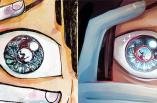



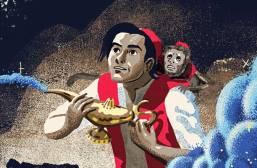





Great article. Here’s the thing: I don’t think Gwen is trans in the movie, and honestly, that makes the movie even better, and I don’t mean that in a mean way at all.
Let me explain. It’s just a theory I’ve heard a lot about, and honestly, I think it might be true.
It’s not just about the trans support message in the movie, like the flags and all that. Gwen’s whole journey seems like it could be a metaphor for coming out. She struggles to tell her dad about her superhero identity, and he ends up hating her alter ego because he thinks Spider-Woman killed Peter Parker, who was like a son to him.
Here’s the thing: When parents of trans kids have a tough time accepting their coming out, it’s often because they feel like they’ve lost their son or daughter. Going through a coming out can feel like mourning, and that’s why the metaphor works so well in the movie.
What I’m saying is Gwen’s story works really well as a metaphor for coming out. But if she was trans, the whole metaphor wouldn’t be as strong. It’s much more powerful to have Peter as “the son who died.” So, in the end, the movie is even better without making Gwen transgender, and it’s still supportive of trans rights.
Good point! I certainly didn’t catch that aspect of things at first. I think you have a point about what the parents go through with a trans child, to a point. Accepting that someone is different from how you hoped, possibly expected, or even dreamed they would be can be very difficult. Sometimes, that kind of transition, especially when things start to potentially physically change can be…hurtful to the parent in a way, but, I think it’s also important for the parent involved to process that pain without taking it out on their child. We certainly see Gwen’s dad make that mistake when it comes to her identity as Spider-Woman, and, importantly, Gwen’s dad does what he can to make it right for her as his daughter. That kind of acceptance can, sadly, be hard to come by for most children, I feel, which is why I love that, yes, that pain is there, and it’s handled, and then there’s the acceptance. They even handled the flip side of that in Miles’s story, which was hard to watch as someone who went through a similar, lifelong, in more aspects than the trans one, rejection from his parents, but it’s so great that both depictions are in the film. It makes it more real, I think, and it definitely makes an impact on the viewer as a result.
Though if she’s MtF she would have already came out to her family. And then the theme can be considered as reinforced. The audience knows she’s Spider Woman and accept it while her family doesn’t necessarily know. Her family knows she’s a woman and accept it while the audience doesn’t necessarily know.
It’s also good that.. it frankly doesn’t really matter either way.
It’s way better to keep it as just a metaphor instead of making Gwen actually trans and having her come out as trans in addition to telling her dad she’s Spider-Woman. It would mess up the movie to make her go through two separate coming out moments. Especially since a big part of the next movie will be Miles telling his parents he’s the new Spider-Man. There’s already so much going on in the next Spider-Verse movie, there’s no space for a subplot about Gwen being trans. It just wouldn’t fit, and trying to force it in would ruin the movie.
Metaphors just work in that sense, and the impact hits you harder because some people can relate regardless of what they also struggle to come out about and Gwen isn’t just fixed on a certain category.
Spider-Man wears a mask so that anyone can see themselves as Spider-Man I believe the same can be said for spider Gwen. You can believe her to be cis or trans but either way it doesn’t change the meaning of her story. Just enjoy the character.
The reality is that when tackling a franchise that revolves around infinite universes, there are going to be Spider Gwens who are in fact trans (some transitioning from female to male, some who are transitioning to female). Is the one in the movie Trans? Probably not, but she could be, because again, infinite universes = infinite versions of spider gwen.
The Gwen in the movie is different from the comics, like her age, for example. And there’s all this trans stuff in her room, like colors and flags. But whether she’s trans or not doesn’t really matter. If you feel happy and seen thinking of her as Trans Gwen, that’s cool. And if you don’t think she is, that’s cool too.
Personally, I don’t think she is, but her Peter might be. We don’t know much about him except that he gets bullied a lot and wants to be a better version of himself. That’s kinda like what some trans people go through, and it could explain Gwen’s flags.
Yes it makes sense but killing a trans character off right in the start of the movie feels like a bummer. Still it’s a good theory
I quite like that interpretation. Even though it doesn’t explain the “coming out” scene near the end of the movie.
I too am ok with this interpretation.
That’s a real downer for sure. But it’s awesome seeing a character who could be Trans getting so much love from everyone.
My buddy had this theory that maybe Peter is actually a trans girl who’s in denial. Like, he just can’t accept it, which is why he goes all crazy with the lizard serum. He thinks it’ll make those feelings go away.
When it comes to art, everything is subjective, and some message aren’t as direct as we think. Even if no character is canonically trans, there’s trans symbolism in there: and yes, I’ve been thinking of Peter being a closeted MtF suffering from the lack of support and confidence (I would honestly relate a lot to that situation), but I also buy the idea that he’s FtM but feeling that he’s not doing enough so he goes through dangerous methods to improve himself. It’s truly poetic and gives weight to the moment when we see Gwen with a “protect trans kids” addesive.
As for Gwen, I just think she’s a great role model overall, being insecure over sharing her secrets with family and friends but at the same time being brave to be herself even when society judge and don’t accept her (hell you could even say Spider-Man is a trans/queer allegory when you think of that). She’s truly a goal and I’m happy to see her as a trans symbol (be it canon or not)
Also, the movie’s abt multiverse. Literally anything is possible
I reckon Peter Parker from her universe was trans, you know? He got bullied at school, and Gwen was always looking out for him. They were tight, like close family friends. So maybe that’s why Gwen’s dad has that trans badge or whatever.
That part also hit me hard, and had me wondering if he was potentially trans as well. It would make those aspects of Gwen’s family make sense, too. I love that the movie can be interpreted so many different ways!
That doesn’t make much sense because literally Peter’s childhood was always like that in all media, he wasn’t trans, he was bullied for being a nerd, which made him an easy target for bullies.
I did not come to the point where hes trans cause he got bullied at school! just phrased wrong.
Best article on this topic. I’m okay with this until people say she’s trans as a fact. Like it hasn’t been shown or confirmed by the creators.
Thanks! I tried really hard to point out how Gwen could be interpreted as trans through the coding section I outlined, but that coding doesn’t necessarily mean that she is trans. At the very least, canonically, it would be fair to say that she is an ally, as that’s blatantly shown.
This movie’s all about folks who society kicks to the curb but they’re like, “Nah, I’mma do me.” The trans themes go way deeper than just some colors and a few flags. Spider-Man stories are all about being different, and even in the first movie, when Miles asks his dad if he really hates Spider-Man, it hits home for people who feel like outsiders, even in their own communities. The stuff that’s not said outright is just as important. And honestly, if Gwen was trans, it wouldn’t change a thing about the story. Sometimes, characters don’t fit into neat little boxes, but the choices they made with Gwen in this movie? They’re spot-on, and that’s why it’s one of the best animated movies ever.
So, you’re saying it’s just normal teen stuff? Teens are always unsure about things, and even adults can’t always make up their minds. Look at Miguel…. he’s all torn up about losing his family and made a bad call. Does that mean he’s trans, or just a regular guy who’s got feelings and made a mess without someone older to help him out?
Peter B Parker was like a dad to Miles, and a Spider-Man too. But he couldn’t stick around to help Miles figure out his new life. Even in the second movie, Peter was bummed about leaving. Miles lost his fatherly mentor with spider powers, something his real dad couldn’t do. But Miles never told his parents, so they had no clue.
Same goes for Gwen. She only spilled her secret when things got crazy, and then her dad finally got it. People can be unsure, especially when it’s a big deal.
It’s almost like things can have subtext? You’re falling for Miguel’s lies and missing the canon point of the film.
I am trans.
I do not think she needs to be or even is trans. The flag in her room can be simply from a trans friend or she knew someone who was trans that passed.
I gotta say, watching that movie hit me hard. It felt like they were telling my story up there on the screen. I’m trans too. It took me forever to figure out what was going on with me. When I finally told my mom, it didn’t go so well. She thought I’d been lying to her all that time. It’s messed up, you know? How are these Spider-People supposed to tell their parents when their parents never ask? It’s not lying, it’s just not being able to be yourself. And it hurts when your folks say they love you, but you’re not sure if they really know who you are. It’s all so confusing.
And yeah, not all coming out stories are about being LGBTQ. I have a friend who has to keep her boyfriend a secret from her parents because they freaked out last time she told them about a relationship. It’s tough to deal with.
I don’t think Gwen is trans. Does she even need to be? She just has a compelling relatable story to anyone who has ever had to hide any core identity about themselves from their parents.
I’m also trans, and this movie, and writing the article as a result, hit me hard a few times. I absolutely agree with what you said. The most important thing about coming out in any situation is that you’re safe enough to do so, and that in and of itself is scary. I’m sorry to hear that your parents didn’t take you coming out so well. Mine didn’t either, and, the only reason I wasn’t kicked out was simply because I didn’t come out as a minor–I was still grappling with a lot back then, and it really was dizzying and heart wrenching at moments–but, figuring out the trans part of it made some things easier, even if that conversation with my parents, who still deadname and misgender me to this day, which caused me to cut them out of my life, was not easy. That said, I’m glad movies like this exist, and I hope it makes the process of having these kinds of conversations and finding supportive people easier at the very least.
Totally! Gwen’s story is already super inspiring, even without making her trans. But you know what? I think Peter Parker might’ve been trans in the movie. That could explain why he was getting bullied. And it makes sense why both Gwen and her dad, Captain Stacy, have the trans flag. They were both tight with Peter, just like Gwen.
I used to think Gwen’s story was just a tip of the hat to trans themes, you know? But when I saw her dad rocking that pin, it got me thinking. Maybe there really is a trans character in the mix, and Peter seems like a solid bet.
Thanks for sharing your story! Sounds like you’ve been through a lot. I just wanted to point out that Captain Stacy, Gwen’s dad, also had a trans pin on his jacket. That’s some extra evidence right there. As a trans person myself, her speech to her dad really sold for me, like exactly how she worded everything literally sounds like me speaking too every transphobe Iv ever had to deal with. But the writers apparently have commented on this and basically said, if you want Gwen to be trans. She is trans. That might change if the movie breaks records. How ever as some who lives in Florida, I really do feel like we need as much positive representation in all forms of media to stand up to these
Thank you! I have been, and the current goings on regarding trans rights makes it difficult sometimes. I sobbed at that part, because it was all right there, beautifully done, with the reaction I wish everyone coming out could have. All the positive representation we can get helps soothe some fears, and I hope you stay safe in Florida!
Wait the writers of the movie actually said that if we want gwen to be trans, she can be trans?
That’s cool for the writers. I think she’s probably trans. But honestly, I’d prefer if the writers just straight-up said she’s trans in this story. Like, X says, symbolic victories are nice, but they don’t really change things. The pin, the flag, they’re symbols, not real change. I get why representation matters. When I was 16, “Wandering Son” really helped me out. And it’s awesome that both cis and trans people can relate to Gwen’s story, while Miles has his own journey. It shows we all struggle and just want our parents to accept us, no matter who we are.
I am also trans and I agree though there was a failed (or at least killed off quickly) clone version of Gwen who had Peter’s memories instead of Gwen’s in order to give her Spider-Man’s abilities so she could assassinate him. (Didn’t work, obviously).
If we get into the fact that they are all tied together in the multiverse then there’s that…. That Peter/Gwen definitely experienced gender dysphoria. Probably some male versions of Gwen (Gawain Stacey, lol) too, If she hopped across the spider-verse and somehow entered one of them instead of physically entering it a-la multiverse of madness then she at least has empathy for a transgender experience. I do like another commenter’s idea of her Peter being a trans guy. Why not? No real backstory problems with it. Without being spider-man his main ability is being really smart.
The creators of the movie basically said she’s trans if you want her to be. I love that.
Wonderful article. Allegories and symbolism like this are used very intentionally to hint at queer themes in media in ways that won’t get movies or shows cancelled or censored or re-rated in countries where depicting queer characters isn’t allowed.
Thank you! That’s a good point, too!
I like the idea of Gwen being trans because it makes the allegory all that much stronger and more meaningful and it doesn’t damage the canon in any sort of crazy way, but I don’t expect to ever see her taking HRT or talking about what it’s like to be a trans teenager on screen.
I don’t think they would make that HUGE change in her character. They will keep it faithful to it’s comic lore origin. I saw the movie and here’s my review or interpretation. She’s not trans. But she’s trans, if you want her to be there’s no denying one’s opinion but we can argue over facts.
I hope she’s trans, I think it would be funny to see how many miles morales fans would get mad.
Most people would probably feel like revealing a character as transgender would be sneaky or dishonest.
So for the time being at least, she’s still just a female… right? Or am I being dumb?
Even if she’s transgender, she’d still be considered female.
Yeah, it would just come down to whether she’s a transgender or cisgender female.
In her room, she had a poster that said “support trans kids,” and her dad’s police uniform had a rainbow on it. People can think what they want about that. Sony might make her trans, especially since the poster made the movie banned in Saudi Arabia.
It’s a valid interpretation you can take from ATSV as the directors themselves have said. But no, no version of Gwen is outright trans.
I don’t think she’s like, totally trans, but her story in the movie is kinda like a story about being trans, even if it wasn’t on purpose (but like, maybe it was).
I’ve never really seen Gwen as trans in the comics or the movie. Sure, there’s that “support trans kids” poster in her room in the movie, but I think it’s just to show she’s down with the cause. I mean, lots of people who aren’t Black were part of the BLM movement, right? Some folks are trying to force the idea that she’s trans, talking about her secrets and how she’s worried about her dad finding out who she really is. But I think those feelings are just about her hiding her superhero identity, not something deeper. In the comics, she’s always been a regular girl named Gwen Stacy. People saying she’s trans are just reading too much into things.
I’m a huge Spider-Man fan and I’ve followed Spider-Gwen since day one. There’s never been any hint that she’s trans. Until the creators actually say she is, it’s all just theories. There’s no proof one way or the other.
I just rewatched the movie, and here’s what I think. You know how colors and themes kinda set the vibe in movies, right? Well, from what I saw, Gwen’s vibe is all colorful and happy, especially when she’s with Peter.
But after Peter’s gone, Gwen’s vibe turns all blue, like sad and moody. It’s like she’s hiding her feelings, you know? Even her room looks all dim and moody. She’s bummed ’cause she can’t hang out with Miles, her first buddy after Peter died.
But then, when she hugs her dad, boom! The colors get all bright and happy. She’s opening up to him, sharing her feelings and stuff.
About the “trans” colors thing? I don’t get why folks are so stuck on making Gwen trans. I didn’t even see a trans flag in the movie. But even if there was one, maybe Gwen’s just supporting the group, you know? She’s not necessarily part of it.
Thanks for this piece. I can’t wait for the third film.
People are trying to force the “Gwen is trans” ideology because of things like her color scheme and story arc, which more accurately mirrors just life in general for anyone. But I feel this article did a valid breakdown of the trans advocacy.
For me, it’s less that “Gwen *is* trans” and more that there’s enough subtext in her story/color scheme/character–especially the subtle things in it that give her the trans coding–for a trans interpretation to also be validating for people who identify with it. I think that does a lot for viewers who need that representation to be available to them, even if it’s just headcanon for them and not necessarily official canon per say. In any case, thank you very much for the comment!
I think finding something relatable and it being an allegory are two different things.
Allegories have to be done on purpose, otherwise they’re just your individual interpretation of a text.
Unless there was ACTUAL proof, I don’t believe Gwen is trans. It’s not because I don’t want her to be trans and all that non sense about LGBT being a sin and a choice (which it’s not), it’s because we only see trans symbols on a bedroom wall or wherever else the movie shows. Just because her color schemes are the same as trans doesn’t mean she’s a trans woman.
As a trans woman myself who just watched the movie I want to comment on this.
I don’t think she’s trans. I do think she’s one of the best trans allegories out there. Which might even be better then her being straight up trans as it can help cis people understand not only our state of being but our experience in tandem. Although it is her colour scheme for the comics I think the changing of her hair and as she finally gets accepted all other colours fade out is purposely symbolic.
I agree, which is why I tried to make it clear that she is not necessarily trans herself, but, she can also easily be interpreted as having trans coding, which, to people who understand that, can then make the connections between her narrative and a potential trans narrative as well. As a trans person, that subtext really helped me feel seen, helped me be able to contextualize my experience to my cis friends and family, etc., which was so nice to have as an example. Thank you for the comment and insight!
My theory is that her version of Peter Parker that dies might have been trans. If you think about it, it makes sense why she’d have a protect trans rights poster in her room, as well as her father having that trans rights pin. It could have been in solidarity with her best friend /possible love interest, Peter Parker. But that’s just me.
I doubt she is trans but she most likely might be a member of the LGBTQ. Maybe Lesbian or Bisexual.
Bro is def not lesbian because she is the love interest of miles but maybe bi or sum else.
The reality is that it doesn’t matter because we’re talking about a franchise that uses the multiverse and has an infinite number of Spider (insert whatever they are here). So yeah, even if this particular Spider Gwen isn’t trans, there’s a universe where said Spider Gwen is and looks damn similar to this rendition.
I agree with a lot of these comments. While I don’t necessarily believe Gwen is trans in the movie, I can agree that she can be seen through an LGBTQ+ lens as a symbol for coming out. The entire idea of the Spider-Verse is that anyone can wear a mask, and whether one sees her as trans or not doesn’t diminish from her significance as a Spider-Person or how wonderful she is to watch on screen. Plus, unfortunately with many large companies, they won’t confirm sexualities or gender identities for the fear of losing audience. That is to say: read Gwen how you want!
Thank you for the thoughtful comment!
I guess we can see one concept from different vantage points